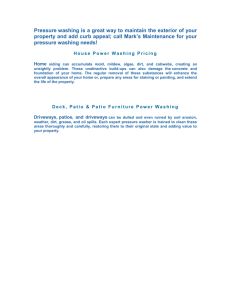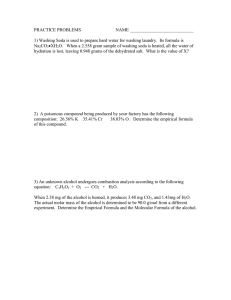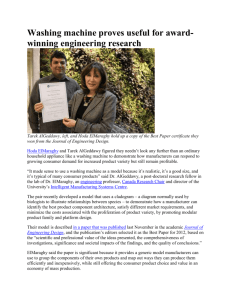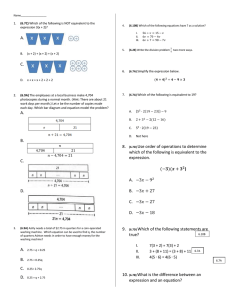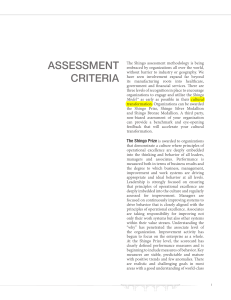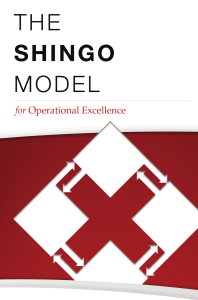The Best Manufacturing Plant in the World
advertisement
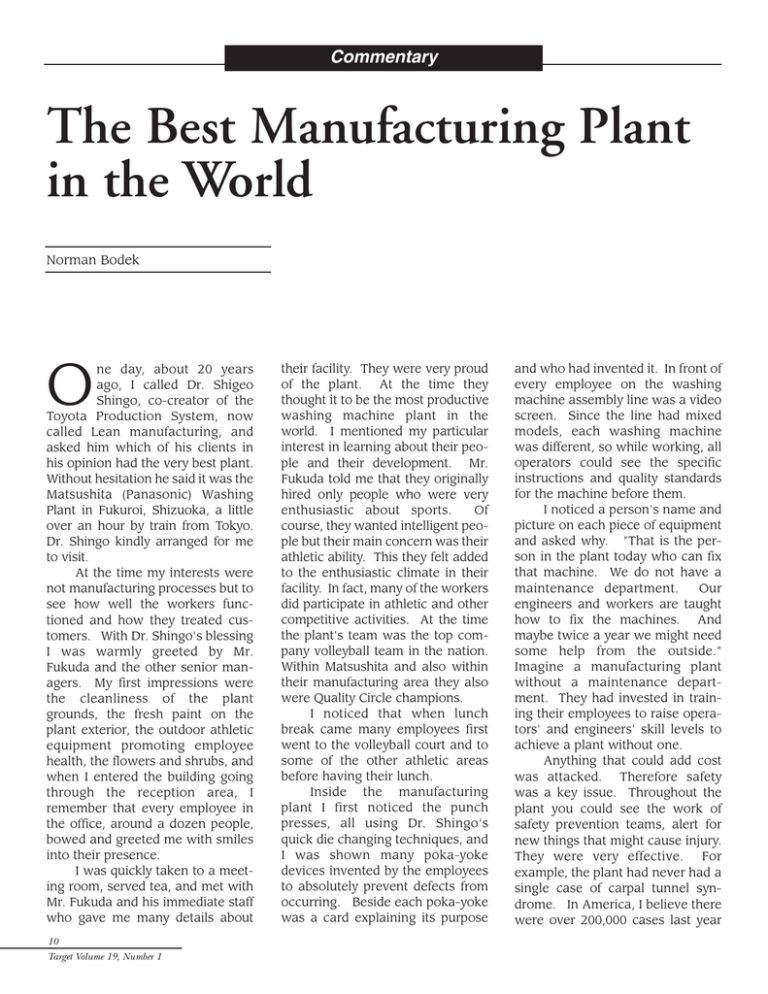
Commentary The Best Manufacturing Plant in the World Norman Bodek O ne day, about 20 years ago, I called Dr. Shigeo Shingo, co-creator of the Toyota Production System, now called Lean manufacturing, and asked him which of his clients in his opinion had the very best plant. Without hesitation he said it was the Matsushita (Panasonic) Washing Plant in Fukuroi, Shizuoka, a little over an hour by train from Tokyo. Dr. Shingo kindly arranged for me to visit. At the time my interests were not manufacturing processes but to see how well the workers functioned and how they treated customers. With Dr. Shingo's blessing I was warmly greeted by Mr. Fukuda and the other senior managers. My first impressions were the cleanliness of the plant grounds, the fresh paint on the plant exterior, the outdoor athletic equipment promoting employee health, the flowers and shrubs, and when I entered the building going through the reception area, I remember that every employee in the office, around a dozen people, bowed and greeted me with smiles into their presence. I was quickly taken to a meeting room, served tea, and met with Mr. Fukuda and his immediate staff who gave me many details about 10 Target Volume 19, Number 1 their facility. They were very proud of the plant. At the time they thought it to be the most productive washing machine plant in the world. I mentioned my particular interest in learning about their people and their development. Mr. Fukuda told me that they originally hired only people who were very enthusiastic about sports. Of course, they wanted intelligent people but their main concern was their athletic ability. This they felt added to the enthusiastic climate in their facility. In fact, many of the workers did participate in athletic and other competitive activities. At the time the plant's team was the top company volleyball team in the nation. Within Matsushita and also within their manufacturing area they also were Quality Circle champions. I noticed that when lunch break came many employees first went to the volleyball court and to some of the other athletic areas before having their lunch. Inside the manufacturing plant I first noticed the punch presses, all using Dr. Shingo's quick die changing techniques, and I was shown many poka-yoke devices invented by the employees to absolutely prevent defects from occurring. Beside each poka-yoke was a card explaining its purpose and who had invented it. In front of every employee on the washing machine assembly line was a video screen. Since the line had mixed models, each washing machine was different, so while working, all operators could see the specific instructions and quality standards for the machine before them. I noticed a person's name and picture on each piece of equipment and asked why. "That is the person in the plant today who can fix that machine. We do not have a maintenance department. Our engineers and workers are taught how to fix the machines. And maybe twice a year we might need some help from the outside." Imagine a manufacturing plant without a maintenance department. They had invested in training their employees to raise operators' and engineers' skill levels to achieve a plant without one. Anything that could add cost was attacked. Therefore safety was a key issue. Throughout the plant you could see the work of safety prevention teams, alert for new things that might cause injury. They were very effective. For example, the plant had never had a single case of carpal tunnel syndrome. In America, I believe there were over 200,000 cases last year Commentary of repetitive strain injuries. Almost all of them could have been prevented if employees in teams observed other employees working. At Matsushita employees in teams developed checklists to consciously discover potential safety problems before they could possibly occur. Parts purchased from the outside were delivered by an automated system adjacent to the assembly line. Parts automatically came down directly to the operators in small carts just prior to the washing machine being assembled. However, even here nothing was perfect. When an operator discovered a defect, the entire line stopped. Supervisors and other workers quickly ran over to the problem and had it fixed within minutes. Imagine again the level of respect given to every operator when they have the power to stop the entire plant to insure that not a single defect could leave the plant to affect one of their customers. Almost every available inch of wall space had been plastered with charts and pictures. These were the results of quality teams, accident prevention teams, and other team activities, displayed to keep everyone in the plant informed of improvement activities. They had a very intensive system I now call Quick and Easy Kaizen. You could see that hundreds of new improvement ideas had been implemented by the workers individually or within their team. This was the first plant where I saw displayed four pictures side by side. Once a month a picture was taken of a certain spot in the plant and then people were encouraged to examine the pictures closely and then try to come up with improvements. This was a very simple but powerful graphic reminder that there are almost always opportunities for improvement. To make this system work the workers were encouraged to visit these pictures and then to talk about them together. I also noticed a multitude of certificates displayed on the walls and hallways. Obviously, these certificates were there to recognize those people who had taken advanced training courses to improve their skills in some area. This plant was like an ongoing university with everyone encouraged to get advanced degrees. Throughout the plant were areas reserved for group meetings. Besides the chairs and tables, each area also had flowers and plants and pictures to make it much more livable. It was a super-efficient facility on every level with one sole purpose — to serve their customers effectively. The customer was obviously their prime focus. Continuous surveys were conducted to determine what the customer needed in washing machines to operate efficiently. In Japan, electricity costs are very high so the washing machines were designed with fuzzy logic to determine the needs of washing based on the size and type of the clothes being washed. From this visit I learned that the most productive plant in the world, in Shigeo Shingo's opinion, was built on a human environment where: 1. People were encouraged to continuously improve their skills and use all their capabilities. 2. People's personal lives and well-being were always enhanced through athletic programs and job enrichment activities. 3. Non-value adding wastes were continuously attacked through everyone's improvement ideas. 4. The customer was always the key focus to insure that not a single defect ever left the plant. 5. Both product and process technology were continuously upgraded with the latest features to please and ease the life of the customer, and also to truly improve processes. 6. There was a goal to competitively price the washing machines to offer the greatest lasting value to the customer. It was an eye-opening visit. Now, 20 years later, I understand even more why a super-efficient manufacturing plant is also a place where people's concerns are met. When you focus on manufacturing excellence, on the needs of your customers, and also on creating a facility that stimulates your employees, you can become what Dr. Shingo said was "the best manufacturing plant in the world." Norman Bodek is president of PCS Press in Vancouver, WA. He is best known for discovering, translating, and promoting many of the Japanese tools and techniques that have reenergized American industry. Most recently he co-authored a book with Bunji Tozawa titled The Idea Generator—Quick and Easy Kaizen. © 2003 AME® For information on reprints, contact: Association for Manufacturing Excellence 380 West Palatine Road Wheeling, IL 60090-5863 847/520-3282 www.ame.org 11 First Quarter 2003
